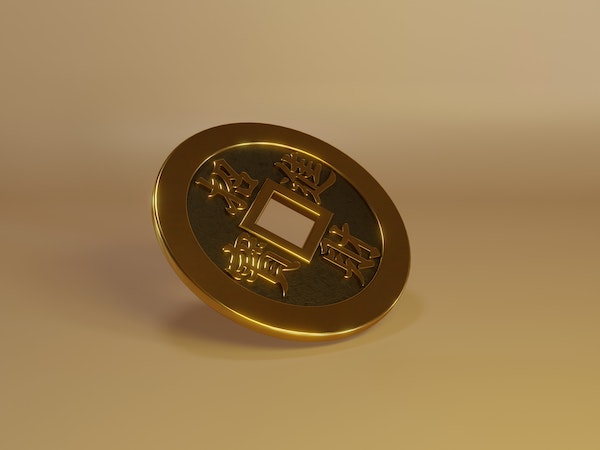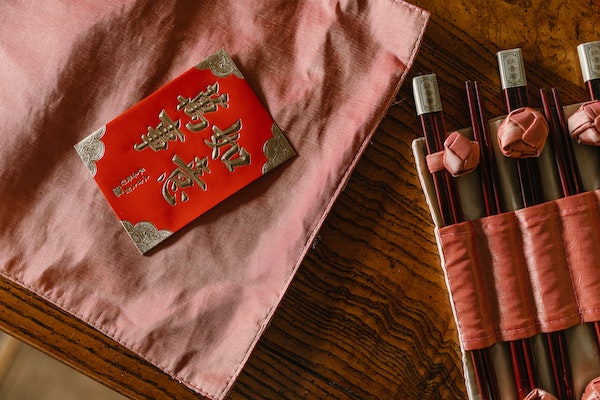Red envelopes are one of the most iconic symbols of the Lunar New Year. Right up there with dancing lions and round fruits, the ang pao (or hongbao) is an item that’s both anticipated and respected in the Chinese community.
While not everyone in the Philippines has Chinese descent, a lot of us do. Cultural practices surrounding the Lunar New Year—known colloquially as Chinese New Year—have rubbed off on the general population. Especially the giving of ang pao.
But where did this practice come from?
The legend of the demon Sui and the red envelope
While giving money gifts isn’t a strictly Chinese cultural practice, there’s an interesting story behind the rise of the red envelope. One of the most famous legends behind the ang pao is about a demon named Sui who preys exclusively on sleeping, innocent children during the Lunar New Year.
In an attempt to keep their child safe, a couple tried to keep their son awake the whole night. They were initially successful, but their son’s eyes started drooping more and more—which made it evident that he wouldn’t make it through to the morning.

To protect their sleeping son, the mother snuck eight lucky copper coins into a red envelope and stuffed it under her son’s pillow. When the demon Sui came to attack their child, it noticed a glowing under the pillow—where the red envelope was. The coins in the envelope (who are actually the eight legendary Chinese immortals in disguise) began to glow more brightly as the demon approached and ended up blinding Sui with its piercing light.
The child was safe, all thanks to the mom’s savvy thinking and a lot of help from the copper coins and the red envelope.
What matters is on the outside—but the inside counts, too
While many of us may be excited to receive a red envelope for its contents, what actually matters is the red envelope itself—traditionally speaking, of course. The color red is traditionally representative of good fortune, energy, and blessings. Wrapping money in this color means that you’re wishing the recipient all of those things.
The design of the ang pao also holds significance. The decoration on the ang pao can hold different types of wishes you have for the recipient. Some typical designs can communicate long life, good health, prosperity, and general good luck for the year to come.

There are also a few things to avoid when putting the red envelope together. Denominations with the number “4” in it must be avoided, because “4” in Chinese is homonymous with “death.” Putting in coins is also a big no-no when gifting a red envelope. This most likely has to do with giving away the denomination (and heavy coins can end up tearing the envelope).
It’s better to put in amounts that include the number “8,” because it’s considered a lucky number in Chinese culture.
Putting fresh, crisp bills is also a must. Old, crumpled paper notes are considered to be unacceptable when you give a red envelope to someone (we’re going for good fortune here, so putting in a crumpled note can be a little off putting). If you’re in a pinch and can’t find fresh bills, sending an online ang pao is also acceptable.

If you’ll be carrying several ang paos with you to give at different times, a good tip is to choose different designs that signify a certain denomination so you won’t get confused when it’s time to give them away.
The who’s who of ang pao gifting
Traditionally, there are also rules for who receives red envelopes and how much should be given.
If we’re sticking to historical convention, the two main recipients of red envelopes are elderly parents with grown kids and young children.
The elderly parents are supposed to receive more money as a sign of best wishes from their older children, and young kids receive it from their parents or grandparents wishing them good luck for the year to come.

The amount usually varies, but it’s customary to give a bigger amount to elderly parents than it is to younger children.
Other groups who are usually expected to give out ang paos during the holiday are employers to their employees, the married to the unmarried (yes, I’ll be expecting some ang paos this season), and people who generally want to thank other people for the services they’ve rendered over the past year—like happy customers to business owners.
It’s always ang pao season—kind of
For people with happy and prosperous lives (read: people who know a lot of other people and have to attend numerous occasions throughout the year), ang pao season never stops.
While it’s customary to give ang pao during the Lunar New Year season, other occasions like birthdays, baptisms, house warmings, weddings, graduations, and all the other special occasions you can think of also call for ang pao gifting.

Giving out red envelopes is a sign of good fortune, but if you’re not in a financial position to do so, you can always give out a smaller amount or hold out until next year. Not everyone can afford to give as much as they want to other people, so while giving out an ang pao will be greeted with joy and delight, it’s not strictly necessary anymore.
The next time you receive a red envelope, show thanks to whoever gave it to you by trying your best to live a happy and prosperous life. And when you can, give back the positive energy by giving out your own red envelopes to the people that matter to you.














































